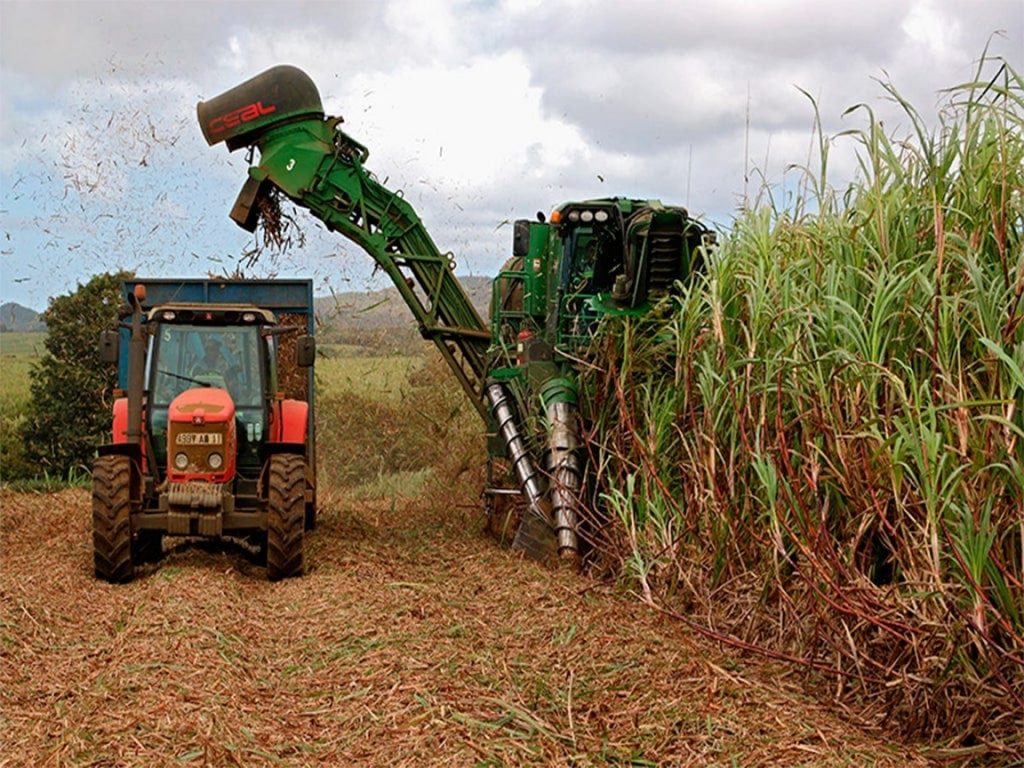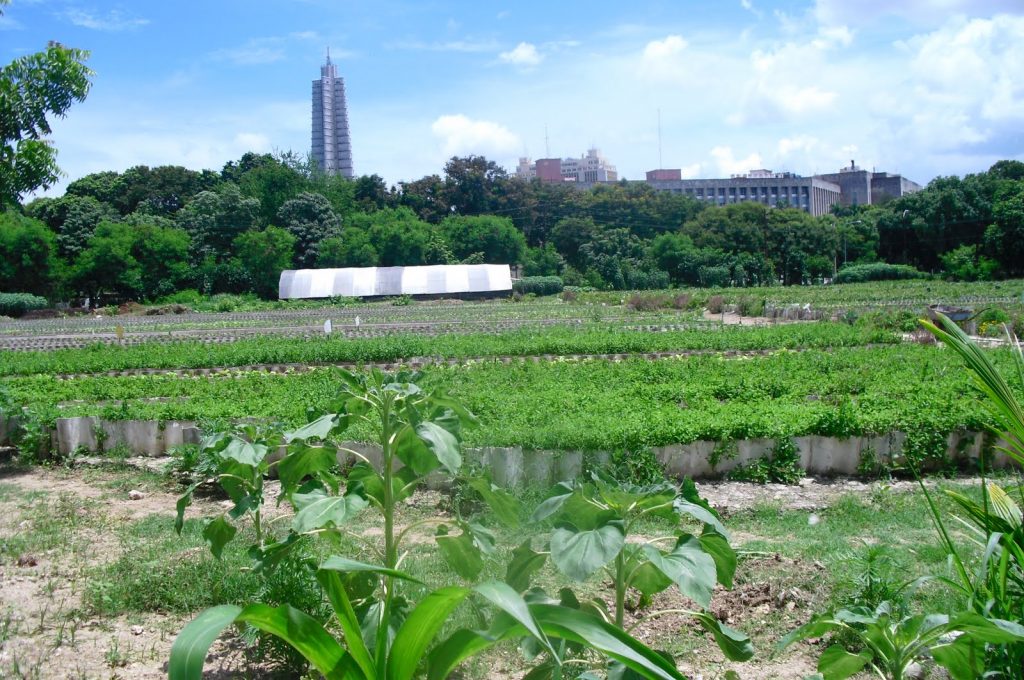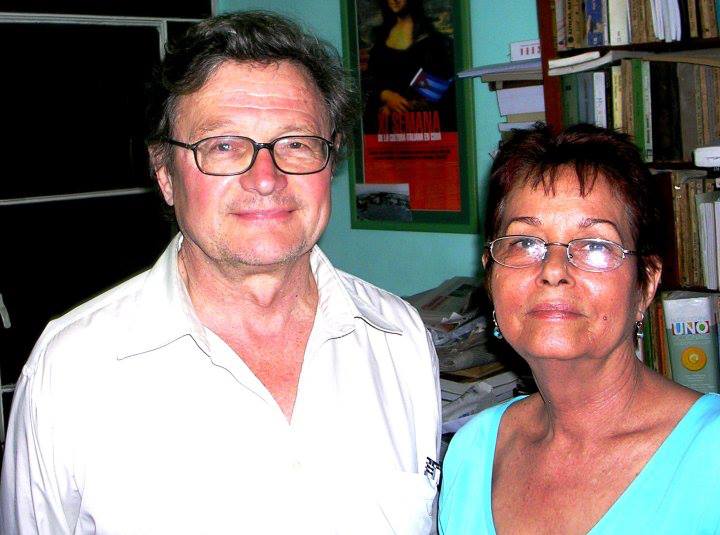Miriam Leiva, independent journalist.

Cuba Study Group, August 16, 2021
Original Article: Cuban Agriculture: Strategic But Inert
One of the many existing theories about the origin of the name “Cuba” refers to a word from the natives of the island that meant “cultivated land.” Although we are not sure that this is correct, we do know that the immense possibilities for agriculture, together with an excellent climate and a good geographical position, marked the value of a Caribbean island that otherwise lacked great natural resources.
Throughout Cuban history, the development of agriculture retained a position of special interest. Since the colonial era, the island became the largest producer of sugar cane in the world, a trend that increased during a large part of the republican years.
Perhaps because of this, anyone would have thought that after the supposed return of the land to its “owners,” the nascent revolution would focus on the development of one of the island’s main riches. But was it so?
Today, 529 years after Cuba was discovered, and after 61 years of land mismanagement, Cuban agriculture faces one of its worst crises marked by a chronic inability to produce food. It is in this context that the government has announced the application of 63 measures with the aim of rescuing an agricultural system that, although recognized as strategic, lies inert before our eyes. Seven groups of stakeholders, among which are agricultural executives, experts, academics, and prominent producers, were consulted in their formulation.
The measures have been described by the current minister of agriculture, Ydael Pérez, as “(…) unprecedented in Cuban agriculture (…)”. They include initiatives such as an agricultural development bank, insurance expansion, the repeal of some of the old “obstacles,” and the legalization of trade of meat and bovine milk. Additionally, some restructuring carried out in the Ministry of Agriculture (MINAG) and in the cooperatives stand out, as well as a certain level of autonomy placed in the hands of state companies, provincial governments, and their local executives. Finally, the creation of an Innovation Committee and other new institutions are also notable and aim to achieve the long-awaited increase in production that Cuban President Miguel Díaz-Canel spoke about.
These measures could be considered the prelude to “changing the way of thinking,” as the head of agriculture pointed out. However, and despite the high expectations generated by this supposed call for change, the results of these measures do not satisfy the expectations of the people and especially those of farmers, who lack decision making freedom.
A real change, which is becoming more and more necessary, should begin with profound transformations in MINAG, not just superficial ones. Transformations that encompass management chain cadres, intermediaries, and the producers themselves, but above all, that revolutionize the state enterprise system, where the greatest inefficiencies in production and marketing are found. It won’t be until then that we reach the goal of substituting imports and building a sustainable offer, which Prime Minister Manuel Marrero Cruz spoke about on May 10 during the meeting to present this document.
So, one wonders, under what conditions are these measures announced?
The Tarea Ordenamiento (or “Organizing Task” or “OT”) was introduced on January 1st, 2021, a process promoted by the Cuban Government which is trying to save the island’s economy through monetary and exchange rate unification, income reform, and the elimination of excessive subsidies, among others. The O.T. shocked Cuban farmers with the low prices attributed to their production in relation to the high costs of necessary supplies and services. As is to be expected, this combination was terribly inefficient and as a consequence discouraged production. In the middle of this scenario, the government adjusted electricity and water rates, agricultural aviation, and others, in some cases at the expense of the state budget. But did it solve the problem?
The answer is, no, it did not. The fundamental objective of the new export and import capabilities (which must be done through state foreign trade companies) and the offers of agricultural inputs, tractors, and other equipment in stores that sell in Freely Convertible Currencies (dollars, euros, etc.) was to motivate farmers to invest, but it is unlikely they will carry out bold ventures without having guarantees of returns on their investments or that their profits will be respected. Let us not forget that the Constitution itself stipulates the limits for the accumulation of wealth in non-state hands.
……………
…………….
Conclusions:
The crisis in Cuban agriculture is serious, and the solutions to its main problems—lack of production, little application of science and technology, low stimulation of the productive forces, etc.—need the immediate commitment of all its actors.
The 63 measures recently announced are still insufficient, since they do not completely eliminate the Cuban farmers’ lack of decision-making freedom; however, these are the prelude to future changes.
The current government has before it the responsibility of pulling Cuba off the cliff, amidst the adversities imposed by the United States sanctions and the Covid-19 pandemic, which demands a true openness to citizen participation and creativity from all Cubans.




